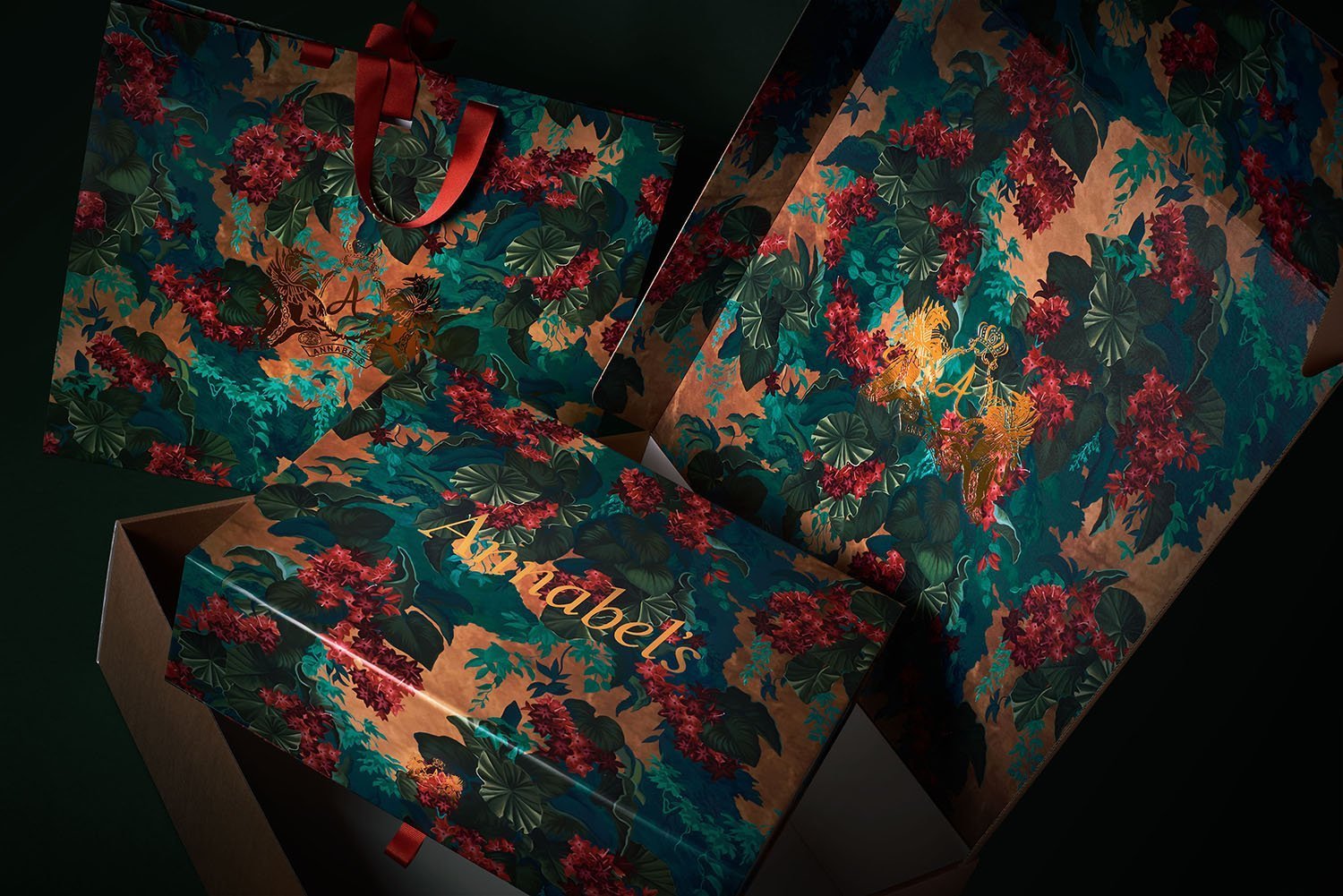CRAFT AND THE DEMOCRATISATION OF LUXURY
Packaging for Annabel’s created by SUM is inspired by the hand-painted wallpaper designs at the Members Club
Luxury is changing, and one key trend is the growing prevalence of artisanal craft from some unexpected places. To understand the context for this recent evolution we first need to cast our minds way back; more than a hundred years.
As we’ve mentioned before, a surprising number of today’s leading luxury brands started their businesses more than a century ago. And in their formative years, through the quality of their materials, the detailing in their products, and their employment of large teams of artisans, those houses quickly became synonymous with fine craft.
Whether consumers were buying a saddle from Hermès with its two-needle stitching, or a dress from Coco Channel, who at the age of 18 had taken her first job as a seamstress, they were enamoured by exquisitely crafted detail.
In countries such as France, Italy, Britain, and Spain the proximity of local craftspeople to their upscale target audiences soon became the foundation for dominance in the world of luxury manufacturing. But as the decades have passed, luxury has changed almost beyond measure.
Pure craft has given way to streetwear, tech solutions, sustainable manufacturing, and massive luxury consumerism in China and the Middle East.
SUM was briefed by Annabel’s to create a set of designs that would be used in packaging a new collection of products available to the club’s members
Yet all the while, quietly in the background, decade after decade, artisans in other parts of Europe, and elsewhere across the globe, have been honing their traditional craft skills, and now is the time when they are starting to shine. Today the world of luxury is becoming increasingly democratised through the shifting of geography.
In locations as far-flung as Calcutta, Lisbon, and Tokyo artisans now have an entirely different set of market conditions in which to grow, and luxury consumers across the globe have an increasingly voracious appetite for their crafts.
This is due in part to people seeking a genuine return to authenticity as a counterpoint to fast fashion. It is also connected to the globalisation of distribution and of eCommerce which is increasingly neutralising the previously critical importance of the geography of manufacturing. At the same time, there is an important social welfare element that enables consumers to support local communities of artisans in diverse parts of the world.
The resurgence of craft is, to an extent, even influencing the nature of styling in core luxury categories such as fashion and jewellery. What was once seen as niche ethnic is now increasingly viewed as part of an eclectic mainstream wardrobe, and the trend will only grow during the remainder of the decade.
If you’d like to speak to SUM about the growth of your own craft-oriented luxury or fashion brand, please email us.
Looking to take your brand further?
Explore our specialist services for luxury brands:


